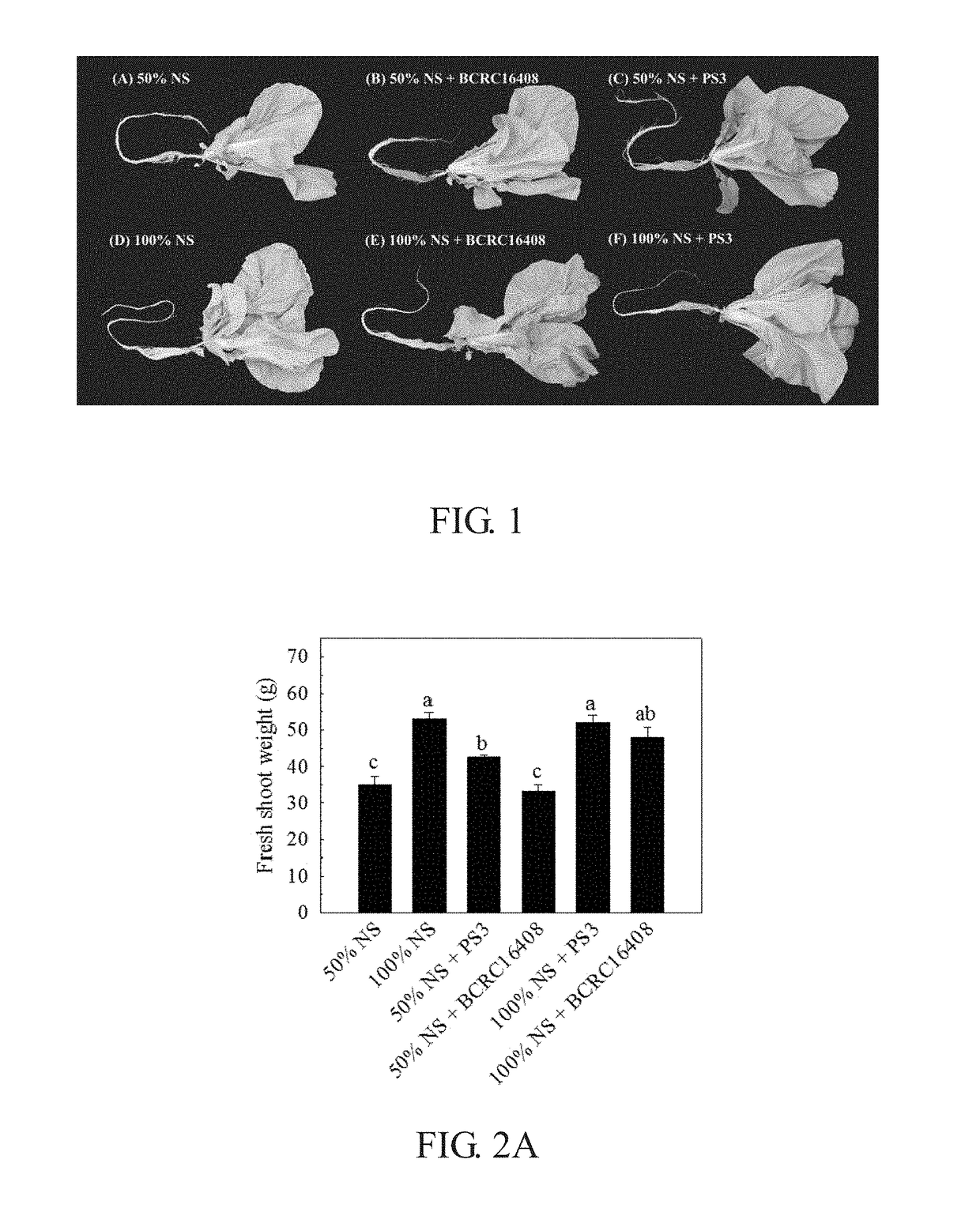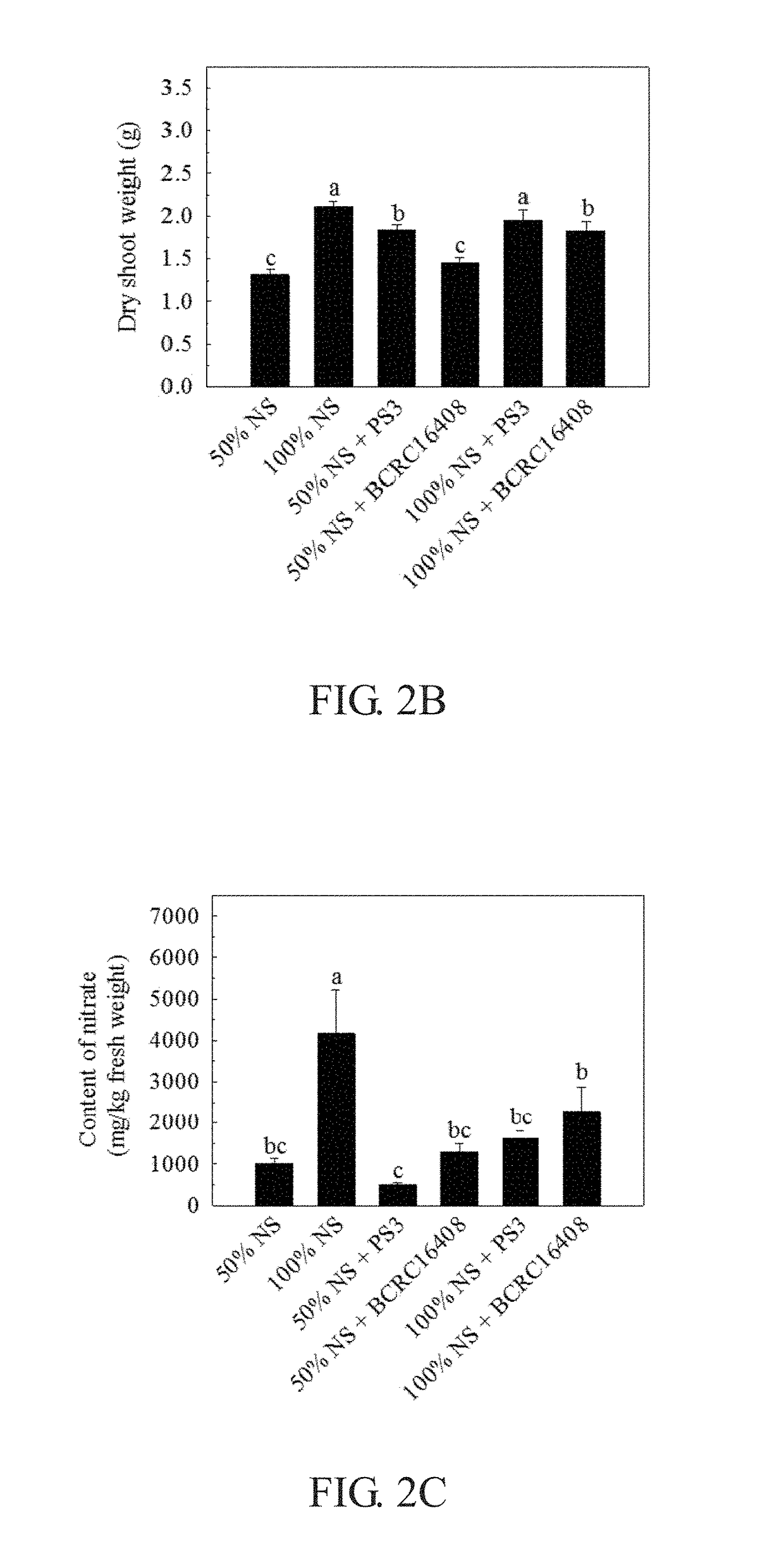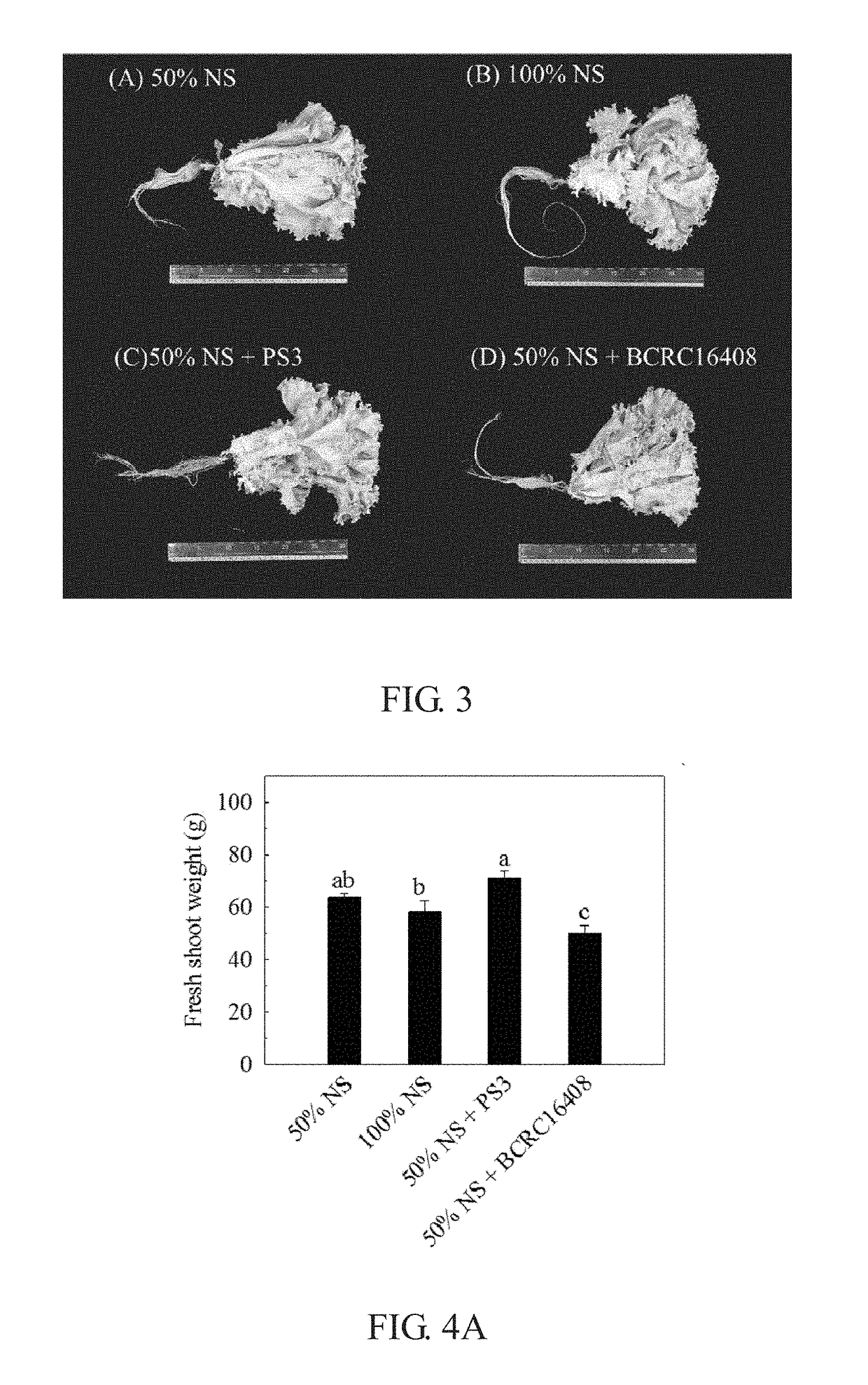Method of reducing nitrate content in a plant
a technology of nitrate content and plant, applied in the field can solve the problems of high level of nitrate in crops to harm human health, and achieve the effect of reducing nitrate content in plants, effectively preventing nitrate accumulation, and enhancing fresh and dry weight of plants
- Summary
- Abstract
- Description
- Claims
- Application Information
AI Technical Summary
Benefits of technology
Problems solved by technology
Method used
Image
Examples
example 1
Compare Maruba Santoh (Brassica rapa Var. chinensis) Cultivated in Hydroponic Nutrient Solution Containing a Different Inoculant in Plant Factory
[0032]In recent years, in view of the natural affecting leafy vegetable growth factors, the plant factory or vegetable factory has been put into practice to produce crop by controlling all affecting growth factors, such as light, temperature, humidity and carbon dioxide content. In the present embodiment, a common hydroponic lettuce such as Maruba Santoh (Brassica rapa var. chinensis) in the plant factory is used as experimental material. R. palustris DSM 29314 or R. palustris BCRC 16408T used for comparison is supplemented with the usual the full strength hydroponic nutrient solution or the half strength hydroponic nutrient solution to estimate the influence of the microbial fertilizer on yield and nitrate content in leafy vegetable.
1.1 Prepare the Bacterial Inoculant
[0033]In the present embodiment, R. palustris DSM 29314 (labeled as PS3) ...
example 2
Compare Crinkle Garden Lettuce (Lactuca sativa Var. crispa) Cultivated in the Hydroponic Nutrient Solution Containing a Different Inoculant in Plant Factory
[0040]In the present embodiment, another common hydroponic lettuce such as crinkle garden lettuce (Lactuca sativa var. crispa) in the plant factory is used as experimental material. R. palustris DSM 29314 or R. palustris BCRC 16408T used for comparison is supplemented with the usual full strength hydroponic nutrient solution or the half strength hydroponic nutrient solution to evaluate the influence of the microbial fertilizer on yield and nitrate content in the crinkle garden lettuce.
2.1 Prepare the Bacterial Inoculant
[0041]In the present embodiment, R. palustris DSM 29314 (labeled as PS3) is used, and R. palustris BCRC 16408T (labeled as BCRC16408) is used for comparison.
[0042]First, pick a single bacteria colony from the phototrophic bacteria culture to 3 mL purple nonsulfur bacteria (PNSB) medium, and incubate the bacteria at...
example 3
Compare the Cuiyu (Brassica rapa Var. chinensis) Cultivated in the Hydroponic Nutrient Solution Containing a Different Inoculant in Plant Factory
[0046]In the present embodiment, another common Brassica rapa var. chinensis hydroponic lettuce, Cuiyu in the plant factory is used as experimental material. R. palustris DSM 29314, R. palustris NTUIOB-YSC3 isolated from paddy soil in Yilan Taiwan, or R. palustris BCRC 16408T used for comparison is supplemented with the usual full strength hydroponic nutrient solution or half strength hydroponic nutrient solution to estimate the influence of the microbial fertilizer on yield and nitrate content in the leafy vegetable.
3.1 Prepare the Bacterial Inoculant
[0047]In the present embodiment, R. palustris DSM 29314 (labeled as PS3) is used, R. palustris NTUIOB-YSC3 (labeled as YSC3) and R. palustris BCRC 16408T (labeled as BCRC 16408) are used for comparison.
[0048]First, pick a single bacteria colony from the phototrophic bacteria culture to 3 mL pu...
PUM
 Login to View More
Login to View More Abstract
Description
Claims
Application Information
 Login to View More
Login to View More - R&D
- Intellectual Property
- Life Sciences
- Materials
- Tech Scout
- Unparalleled Data Quality
- Higher Quality Content
- 60% Fewer Hallucinations
Browse by: Latest US Patents, China's latest patents, Technical Efficacy Thesaurus, Application Domain, Technology Topic, Popular Technical Reports.
© 2025 PatSnap. All rights reserved.Legal|Privacy policy|Modern Slavery Act Transparency Statement|Sitemap|About US| Contact US: help@patsnap.com



